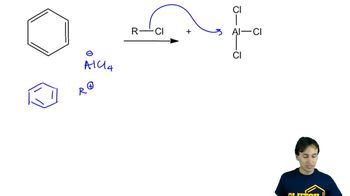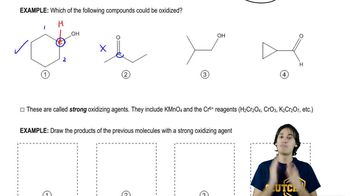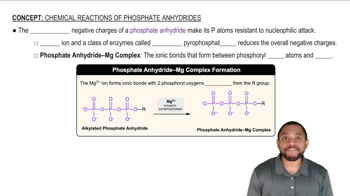Textbook Question
Show how you would accomplish the following transformations. You may use any additional reagents you need.
(b)
 Verified step by step guidance
Verified step by step guidance Verified video answer for a similar problem:
Verified video answer for a similar problem:



 0:57m
0:57mMaster Quick overview of oxidation. with a bite sized video explanation from Johnny
Start learning